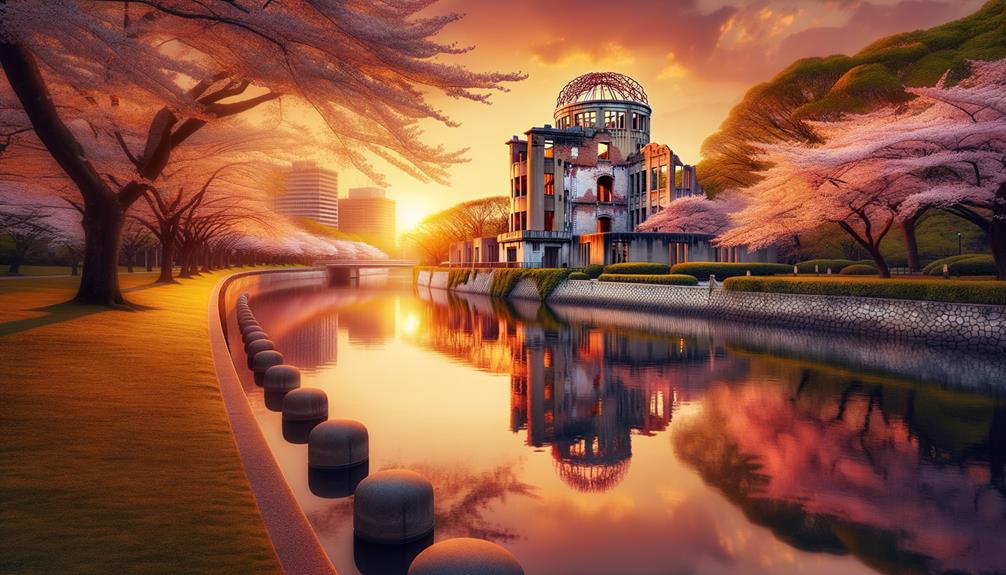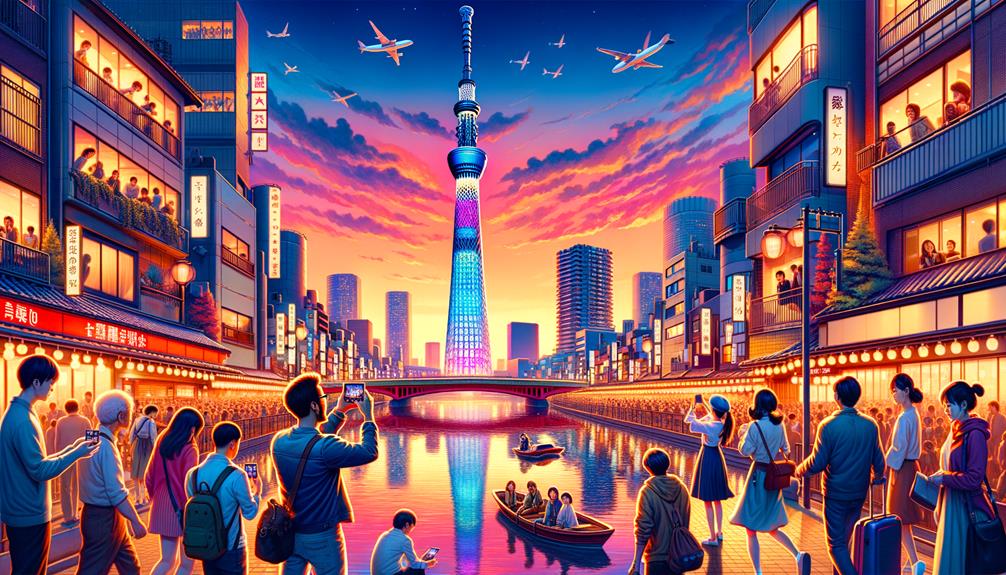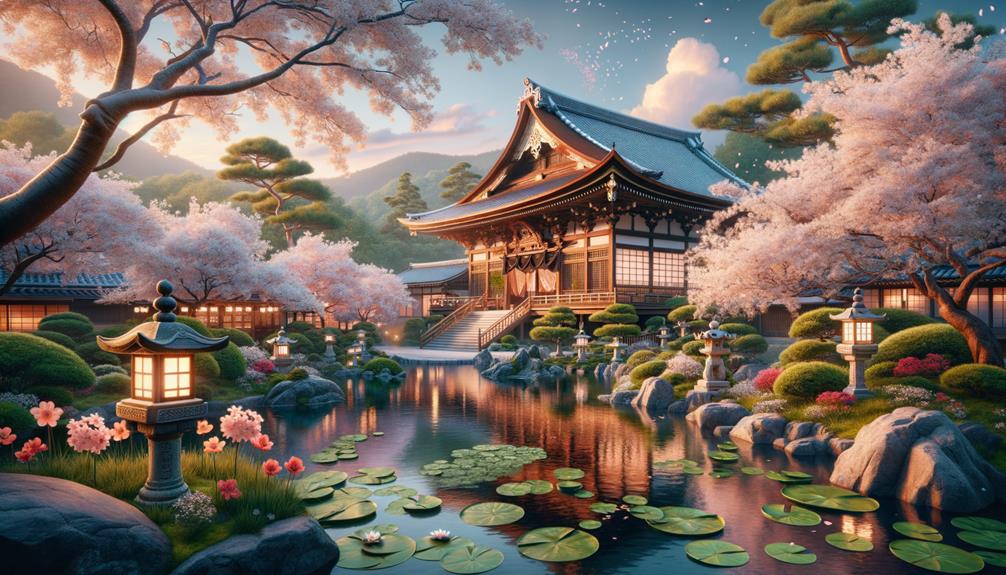Strolling through Hiroshima Peace Memorial Park, I was struck by how its tranquil beauty contrasts with the weight of its history. The A-Bomb Dome, with its exposed framework, stands as a stark reminder of the past, while the park itself is lush with greenery and well-kept paths. Every corner seems to tell stories of resilience and hope, especially around the Children's Peace Monument, adorned with thousands of colorful paper cranes. This space serves not just as a place of remembrance but as a powerful call for peace that really hits home. Ever wonder about the annual ceremonies and their impact?
Getting There and Around
To get to Hiroshima Peace Memorial Park, I hopped on tram line 2 from Hiroshima Station. The tram ride was both smooth and picturesque, giving me a peek into the city's lively everyday scene. As we traveled through the city, I saw a mix of modern stores, quiet temples, and locals going about their routines—a nice preview of Hiroshima's unique blend of old and new.
Getting off at the Genbaku-Domu Mae stop, I immediately noticed the calm that surrounds the park. The Peace Memorial stood with a solemn grace, inviting thoughtful reflection. As I wandered through the park, I was struck by a deep sense of tranquility, which sharply contrasts with the tragic history it remembers. The park's green spaces and well-kept paths led me to various monuments and memorials, each sharing stories of strength and hope.
Exploring the park was easy, thanks to clear signs and an intuitive layout. I felt at ease, moving at my own pace, absorbing the history and the powerful messages of peace that fill the park. Hiroshima Peace Memorial Park is more than just a place to visit; it's an experience that leaves a lasting impact.
Hours and Fees
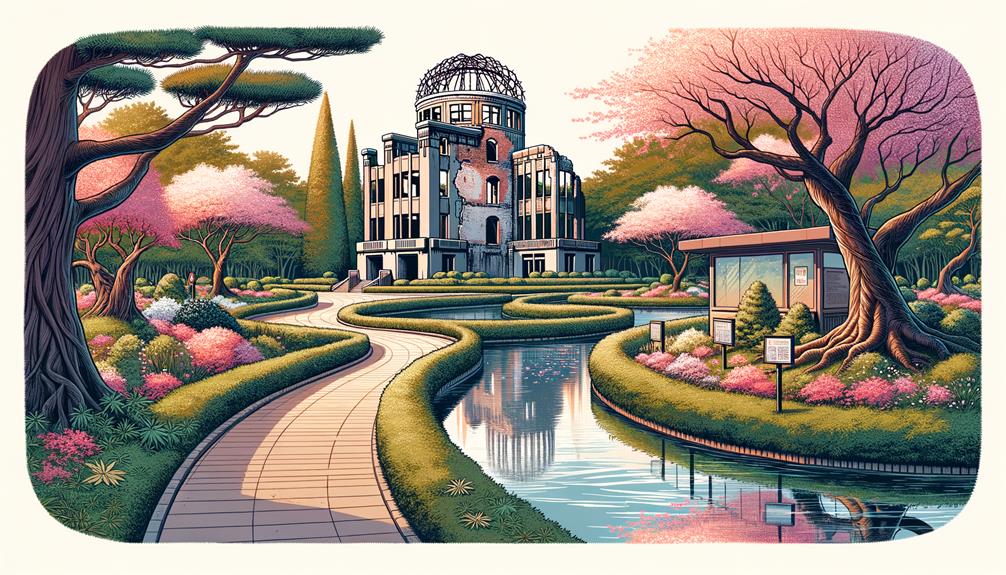
As I wandered through the tranquil Hiroshima Peace Memorial Park, I felt drawn to the Hiroshima Peace Memorial Museum. The museum welcomes visitors from 7:30 AM to 7:00 PM, with longer hours in August. Just a heads-up, they stop letting people in 30 minutes before closing.
Inside the museum, the personal stories and artifacts hit me deeply. Each exhibit highlights human suffering and underscores the need for peace. It's not just a collection of historical items; it's a moving educational experience about Hiroshima's past and the impact of the atomic bomb.
If you're planning a visit, note that the museum is closed on December 30-31. This short break helps them keep the museum in top shape for all the visitors who come to learn and reflect.
In this space dedicated to peace and reconciliation, I felt a sense of freedom—freedom to reflect, mourn, and hope for a future without such tragedies. The Hiroshima Peace Memorial Museum stands as a testament to the enduring human spirit.
Hiroshima Peace Memorial Museum
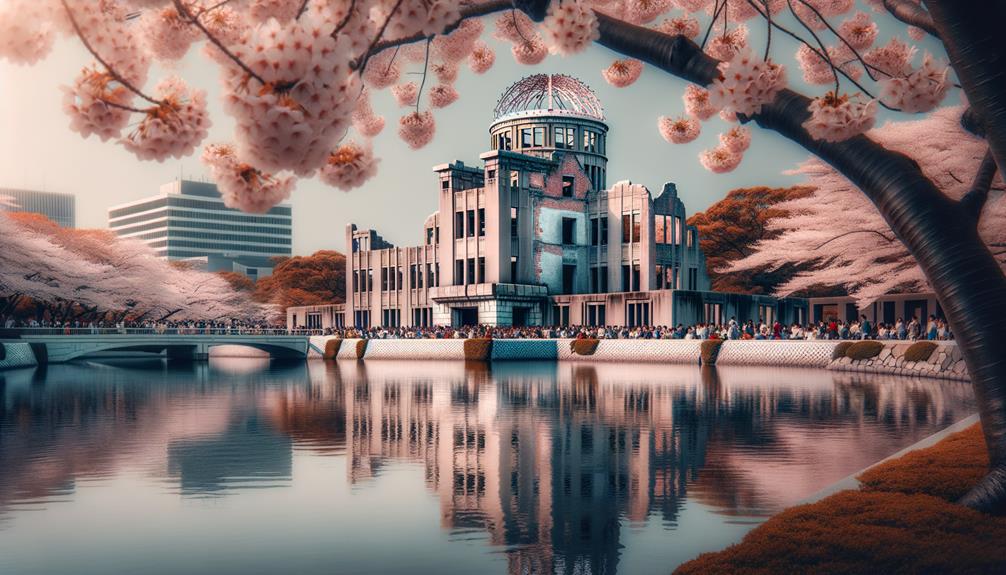
Walking into the Hiroshima Peace Memorial Museum, I was immediately struck by the solemn atmosphere that filled its halls, a poignant reminder of the city's tragic past. The exhibits are carefully arranged, each one sharing the heartbreaking stories of the atomic bomb victims. Photographs and personal items, like a child's charred lunchbox or a tattered school uniform, powerfully convey the human cost of nuclear warfare.
As I moved through the galleries, I was deeply touched by the survivors' testimonials. Their words echo a universal plea for world peace and nuclear disarmament, crossing language barriers and borders. The museum doesn't just recount history; it pushes visitors to think about the consequences of war and the need for reconciliation.
Recognized as a UNESCO World Heritage site, the Hiroshima Peace Memorial Museum stands as a stark reminder of the past while fostering hope for a peaceful future. It's a place where the lessons of history are preserved, urging us to work towards a world free from the horrors of nuclear weapons. The museum's profound impact stays with you long after you leave, a testament to its vital mission.
Notable Symbols
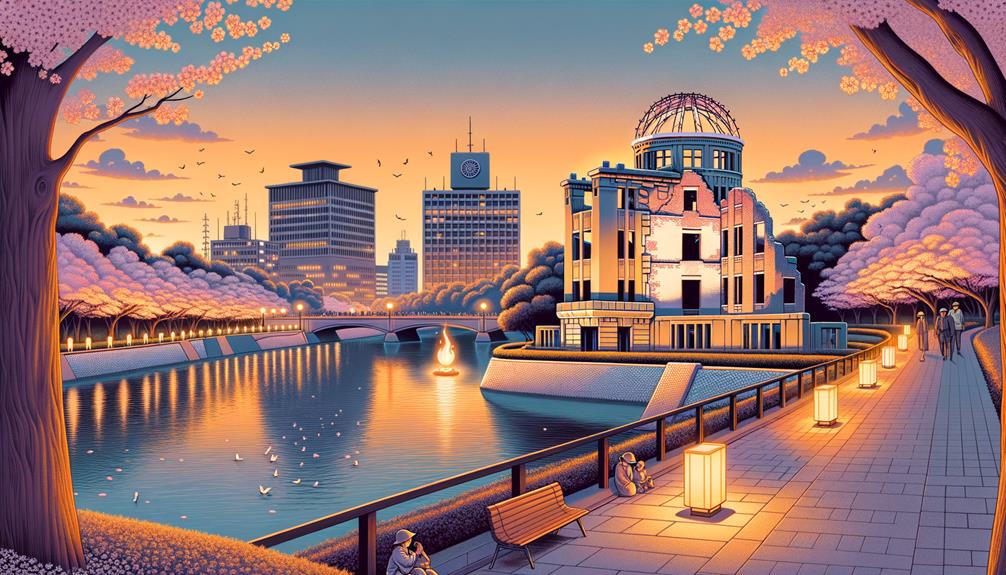
Standing in front of the A-Bomb Dome, I felt an overwhelming sense of history's weight. Its skeletal remains silently told the story of the devastating impact of nuclear war. Nearby, the Children's Peace Monument, covered with thousands of colorful origami cranes, brought tears to my eyes as I thought about Sadako Sasaki and the countless young lives lost. These symbols reminded me of our shared duty to strive for a world without nuclear weapons.
The A-Bomb Dome
The A-Bomb Dome, with its skeletal remains against the Hiroshima skyline, stands as a haunting reminder of the devastation caused by nuclear weapons and a powerful plea for global peace. Walking through Hiroshima Peace Memorial Park, I can't help but feel the weight of history pressing down on me. The A-Bomb Dome, once an exhibition hall, is now a UNESCO World Heritage Site and the only structure left standing near the hypocenter of the atomic bomb explosion in 1945.
The sight of the dome is both chilling and inspiring. Its exposed steel framework and crumbling walls tell a story of unimaginable destruction while embodying the resilience and hope of humanity. As I stand before it, I reflect on the profound messages this monument conveys:
- The destructive power of nuclear weapons.
- The resilience of the human spirit.
- The importance of remembering history.
- The universal desire for peace and disarmament.
Efforts to preserve the A-Bomb Dome in its original state ensure that future generations understand the horrors of nuclear warfare. This monument is more than just a ruin; it's a symbol of our enduring hope for a world free from the threat of atomic weapons.
Children's Peace Monument
As I walk deeper into Hiroshima Peace Memorial Park, my attention shifts from the somber A-Bomb Dome to the touching Children's Peace Monument. This monument, dedicated to Sadako Sasaki and all the young victims of the atomic bombing, features a statue of a girl holding a paper crane, symbolizing Sadako's wish for peace through folding 1,000 cranes. Her story has inspired a worldwide movement for hope and peace.
Every year, people from around the globe send thousands of paper cranes to this site, each one a testament to the shared dream of a world without nuclear weapons. These colorful cranes serve as a vivid reminder that even in the face of great tragedy, hope and unity can endure.
| Key Features | Description |
|---|---|
| Statue of Sadako Sasaki | Young girl holding a paper crane |
| Annual Paper Cranes | Thousands sent globally as peace gestures |
| Symbolic Significance | Represents hope and a world without nuclear weapons |
Standing before the Children's Peace Monument, I feel a profound connection to the innocent lives lost and a renewed commitment to promoting peace. The sight of the brightly colored paper cranes swaying in the breeze is both a solemn tribute and a powerful call to action for a more peaceful world.
Ceremonies and Events
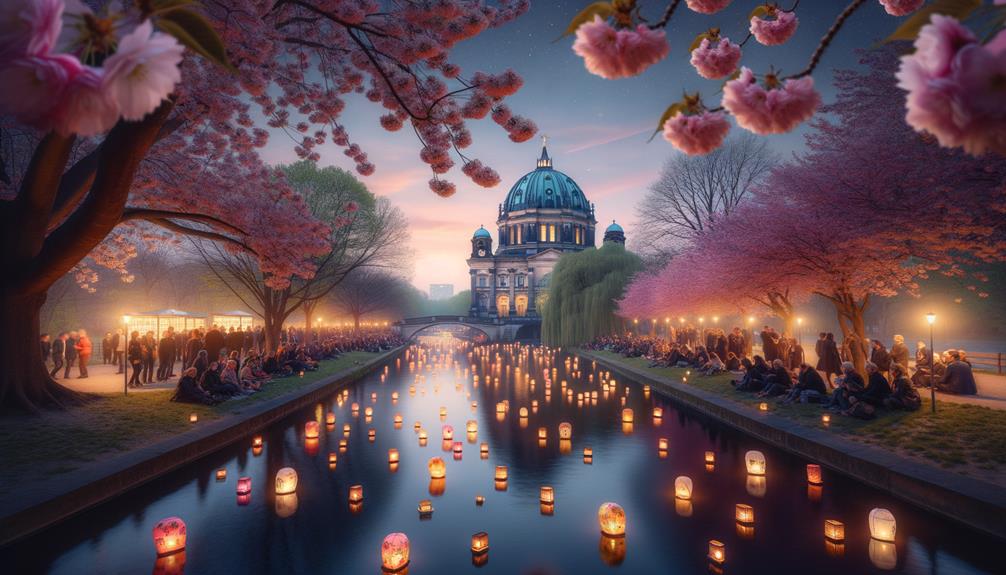
Every August 6th, I find myself surrounded by somber faces at the Hiroshima Peace Memorial Ceremony. It's a day to reflect on the profound impact of the atomic bombing and the enduring message of peace. The ceremony takes place near the iconic Genbaku Dome, a silent testament to the city's devastation and resilience. This day is all about honoring the victims of the atomic bomb and promoting a global culture of peace.
The atmosphere is charged with emotion, from the ringing of the Peace Bell to offering water to the victims. It feels both solemn and hopeful, as if collective grief and aspirations for a peaceful future are intertwined.
- Peace Declaration: The mayor delivers a heartfelt speech advocating for nuclear disarmament.
- Release of Doves: This symbolizes hope and renewal.
- Moment of Silence: At 8:15 AM, marking the exact time of the bombing.
- Lantern Ceremony: Floating lanterns on the Motoyasu River represent the spirits of the victims.
Witnessing these events, I feel a deep connection to humanity's shared journey towards peace. It's a poignant reminder of our capacity for both destruction and reconciliation, urging us to choose peace.
Nearby Accommodation
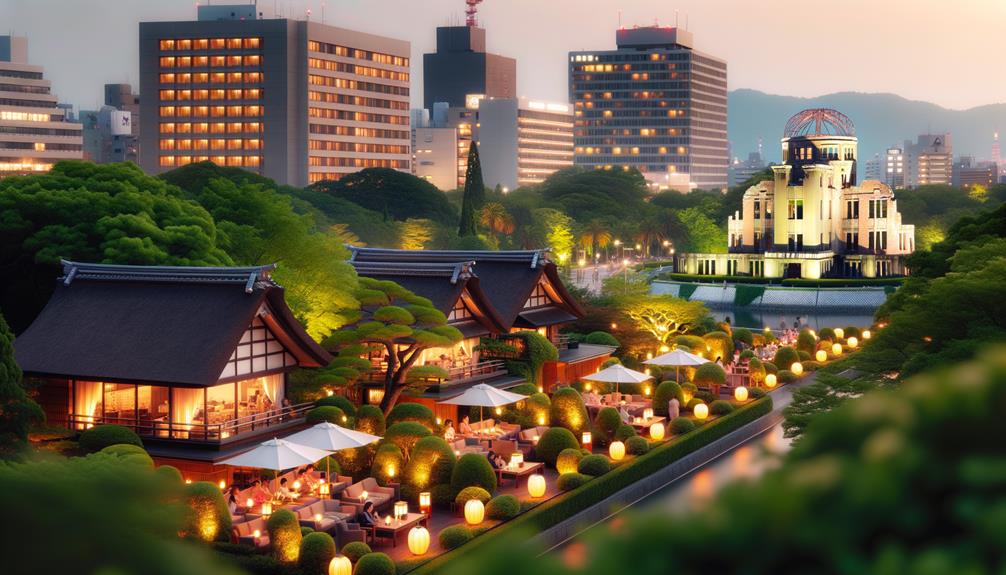
While checking out the area near Hiroshima Peace Memorial Park, I found a great mix of places to stay that suit different preferences and budgets. Whether you're looking for the high-end comfort of GRAND BASE Hiroshima or the convenience of being close at HOTEL PROMOTE HIROSHIMA, there's an option for everyone. Each spot has its own charm, like a peaceful balcony view or a delicious Asian breakfast to kick off your day.
Diverse Lodging Options
When you're looking for a place to stay near Hiroshima Peace Memorial Park, there are plenty of options to fit any budget or style. You can find everything from affordable hostels like 88 House Hiroshima to luxury hotels like Randor Hotel Hiroshima Prestige. This variety means you can pick a place that matches your needs and preferences perfectly.
If you stay at places like HOTEL CLA-SS HIROSHIMA-TOKAICHI or FAV HOTEL Hiroshima Heiwa Odori, you'll be just a short stroll from landmarks like the Atomic Bomb Dome and Hiroshima Danbara Shopping Centre. For those who enjoy a bit more luxury, the Hilton Hiroshima and HOTEL PROMOTE HIROSHIMA offer upscale amenities along with easy access to Chosho-in Temple and the heart of Hiroshima Peace Memorial Park.
Here are a few unique features you might find in nearby accommodations:
- Enjoy a delicious Asian breakfast at Hiroshima no Yado Aioi to kick-start your day with local flavors.
- Many hotels offer terraces and communal lounges, perfect for meeting new people or enjoying city views.
- Some places have pools and jacuzzis, great for unwinding after a day of sightseeing.
- Facilities for guests with disabilities are available, ensuring a comfortable stay for everyone.
Choosing your lodging here isn't just about finding a place to sleep; it's about making your visit to this historic and vibrant city even more special.
Proximity to Attractions
Staying close to Hiroshima Peace Memorial Park means you're just a short walk away from some of the city's most significant historical and cultural sites. I discovered that HOTEL CLA-SS HIROSHIMA-TOKAICHI, just 3.2 km from Hiroshima Station, offers both convenience and a genuine connection to the city's vibrant atmosphere. Being near the park allows me to easily explore the poignant grounds where the impact of the Atomic Bomb is still very much felt.
Another great option is FAV HOTEL Hiroshima Heiwa Odori, located near the Hiroshima Danbara Shopping Centre. After a day of reflection at the Peace Memorial Park, it's refreshing to dive into the local shops and restaurants without a long trek. For those looking to deepen their cultural experience, Hilton Hiroshima near Chosho-in Temple is an excellent choice. This spot makes it easy to visit both the World Heritage site and other historical landmarks, enriching my understanding of Hiroshima's history.
HOTEL PROMOTE HIROSHIMA and Hiroshima no Yado Aioi are also solid choices, catering to a range of preferences, ensuring every visitor finds a perfect fit. Each step around these areas feels like a journey through history, captured in memories and photographs, deeply connecting me to this resilient city.
Significance and Preservation

Walking through Hiroshima Peace Memorial Park, the significance of the Genbaku Dome is undeniable. It stands as a powerful symbol of resilience and humanity's commitment to peace and nuclear disarmament. As a UNESCO World Heritage site, its preservation showcases Hiroshima City's dedication to remembering this critical part of history. The Dome's symbolic value is immense; it serves as a stark reminder of the horrors of nuclear warfare and the hope for a peaceful future.
Preserving the Dome is an ongoing and detailed effort. Hiroshima City, along with many dedicated individuals, works hard to maintain its original state. These preservation efforts include:
- Regular maintenance to prevent wear and tear
- Detailed inspections to ensure structural safety
- Financial support for preservation projects
- Public awareness campaigns to emphasize its importance
As I walk along the park's peaceful paths, I think about how this structure, frozen in time, connects us all to a shared commitment to peace. The Genbaku Dome is not just a historical artifact; it's a living symbol of our collective responsibility to ensure such tragedies never happen again.
Frequently Asked Questions
Why Is Hiroshima Peace Memorial Park Famous?
Hiroshima Peace Memorial Park is renowned for honoring the victims of the atomic bombing in 1945. The park includes the well-known A-Bomb Dome, a moving museum, and holds an annual ceremony. All these elements urge for peace and showcase human resilience.
What Was the Controversy of the Hiroshima Peace Memorial?
The controversy centers on finding a balance between preserving authenticity and ensuring safety. Some people believe that reinforcing structures like the Genbaku Dome alters its original state. To me, it represents our challenge in respecting history while making sure future generations can experience it too.
How Much Does It Cost to Go to the Hiroshima Peace Memorial?
Visiting the Hiroshima Peace Memorial is free, but the museum has a small fee of 200 yen for adults. Children under 12 can enter for free. Special exhibitions might have additional charges. I highly suggest donating to help preserve this important historical site.
How Long Does It Take to See the Hiroshima Peace Park?
I felt like I could spend forever there, but realistically, set aside 2-3 hours. The museums, monuments, and quiet areas deserve your time and attention for a truly moving and historically rich experience.

